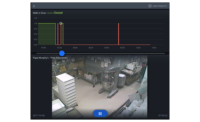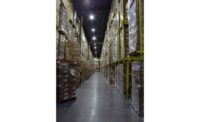Wal-Mart or not, there's a compelling dollars-and-sense case for package optimization.
It was during the fall 2006 Clinton Global Initiative conference that Wal-Mart President Lee Scott announced his company's sustainability initiative. Since then, many areas of U.S. business have ramped up the focus on environmental stewardship.
The University of Nevada at Reno's Center for Logistics Management reports that 21 of the nation's Fortune 100 companies have since published "sustainability" reports. Forty-four of those companies have social responsibility reports and 63 of them devote Web pages to sustainability or the environment.
For its part, Wal-Mart also maintains a sustainability section on its Web site. Meanwhile - recognizing that environmental stewardship is impacted by daily personal decisions - the Bentonville, Ark.-based retailer also has created a personal sustainability plan for each of its employees. Elsewhere, Wal-Mart has created posts for a "senior vice president of sustainability" and a "vice president of packaging and product innovation," the latter position within its Sam's Club division.
Wal-Mart vendors, meanwhile, are learning to use the retailer's sustainable packaging scorecard. This measurement tool provides specific metrics for suppliers to evaluate themselves relative to other vendors. These metrics evolved from a list of favorable attributes known as the "7 R's of Packaging," which are: remove, reduce, reuse, recycle, renew, revenue and read.
After months of consultations, the CPG industry's Packaging Sustainable Value Network - a group of 200 global industry leaders - outlined the following metrics for Wal-Mart's packaging scorecard. When considering a favorable score:
- 15 percent will be based on GHG / CO2 per ton of production;
- 15 percent will be based on material value;
- 15 percent will be based on product / package ratio;
- 15 percent will be based on cube utilization;
- 10 percent will be based on transportation;
- 10 percent will be based on recycled content;
- 10 percent will be based on recovery value;
- 5 percent will be based on renewable energy;
- 5 percent will be based on innovation.
Not surprisingly, Wal-Mart brought its private label suppliers into its packaging program in November 2006. The retailer's 60,000 suppliers subsequently joined the plan in February 2007. Wal-Mart then launched its packaging scorecard evaluation program this past February.
To date, the program appears to have good momentum with more than 6,000 suppliers and an estimated 97,000 products involved. By 2013, Wal-Mart projects $10 billion in total cost reductions with $3.5 billion of that amount channeled to Bentonville while suppliers share the remaining $6.5 billion. Driving those savings is a comprehensive 5 percent reduction in packaging, company officials say.
Because my consulting firm specializes in packaging optimization, I am often asked whether the 5 percent packaging reduction goal realistically is achievable. My unequivocal response is "absolutely."
This is based on our experience with more than 400 packaging optimization projects - in which our clients averaged a 10 percent packaging reduction. That said I expect Wal-Mart and its suppliers easily will surpass the 5 percent target.
Here's another case in point. Last fall saw retail food and beverage processors in the United Kingdom pledge to trim 340,000 tons of packaging by 2010 - a figure significantly lower than 4.6 million tonnes used in 2005. This represents a 13 percent reduction, which is more than double the Wal-Mart objective.
Interestingly, the U.K. processors also pledged that no food and packaging waste would go to landfill after 2015. Furthermore - using 2005 figures as a comparison - this group also has targeted 2010 for an absolute reduction in the level of packaging reaching households.
Ten years ago, one of my firm's founders told me that - while there should be strong environmental impact from packaging optimization - there wasn't much corporate commitment. Candidly, I now am amazed by how quickly the situation has changed. Almost every company we speak to has a big interest in sustainability and I have no expectation about the pressure slackening any time soon.
One large food processor - a significant player in refrigerated and frozen foods - already has an active packaging optimization strategy. When I asked about its deliverable savings, the answer was $100 million in cost reduction.
Let me point out two other areas of note.
First, processors are much more open to considering a change in packaging if it delivers worthwhile cost reduction. In the past, executives seemed much less inclined to package count changes inside shipping cases and they gave very little thought to retail package revisions. Now, almost everything is open to evaluation.
Secondly, active food distributors - including those in retail and in foodservice - are taking a much more participative role and influencing how their private label suppliers are packaging product. Similar to Wal-Mart, these distributors have learned that if the supplier isn't efficient in all aspects of the supply chain, both the processor and retailer suffer high costs.
Although it's not a food company, one of our clients - Crate & Barrel - recently won a green award as a direct result of packaging optimization. In Crate & Barrel's case, there were many ancillary benefits to this project. However, the main driver was that by re-engineering its shipped cases, the company could reduce corrugate usage by more than 10 million square feet per year. The environmental benefit of eliminating this quantity of material from the waste stream cannot be overemphasized.
DuPont honors sustainable packaging achievements
The DuPont Co. recognizes consumer packaged goods companies for excellence in packaging every year, but this year - the 20th anniversary of the DuPont Awards for packaging innovation - the Wilmington, Del.-based company says it added a twist.
"Sustainable packaging is a growing and important focus area for DuPont," said Diane Gulyas, group vice president - DuPont Performance Materials in a press release about the awards. And DuPont is far from alone in its concern. The company says approximately 65 percent of consumer packaged goods companies say they will change their packaging in the next year to make it more environmentally friendly.
This year DuPont gathered a group of jurors with substantial industry experience to honor achievements in the sustainable packaging arena. Seven winners and three honorable mentions were chosen from more than 80 international entrants. Factors considered were responsible sourcing, effective recovery and energy optimization.
DuPont recognized Harrislee, Germany-based Larsen Danish Seafood who it says designed a single-portion retort container that cuts down on the waste produced from discarding larger portions and also is made using raw materials. DuPont adds that the container is recyclable and uses less energy and resources during production than traditional retortable containers.
For more information on the other 20th DuPont Awards for Packaging Innovation winners, visit www.packaging.dupont.com.
Kraft outlines packaging goals
Kraft Foods Inc. is committed to making its food packaging more sustainable and has identified three principal means of doing so. That was the message from Hendrik Eyselee, the company's director of packaging and process technologies.
Speaking at the Food Processing Suppliers Association annual conference this March, Eyselee said Kraft, Northfield, Ill., uses a packaging "eco-calculator" to provide a quantifiable perspective on:
- package weight;
- recycle ability / recycled content;
- package to product ratio;
- renewable materials;
- resulting landfill waste;
- energy required to produce package.
"We will achieve packaging reduction primarily with light-weighting technologies," he said.
Kraft's three principal approaches will be to: reduce layers, make package design more efficient and optimize materials. Eyselee noted that from 2001 to 2006, Kraft reduced energy consumption by 22.8 percent, water consumption by 32.4 percent and waste generation by 14 percent.




